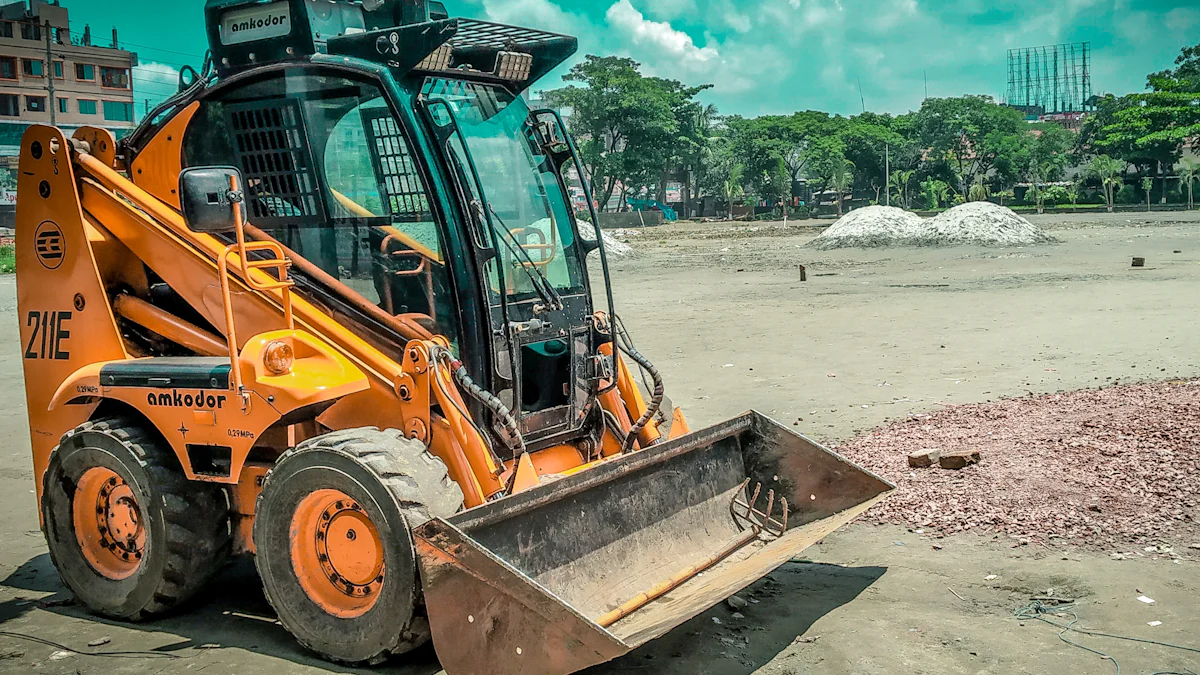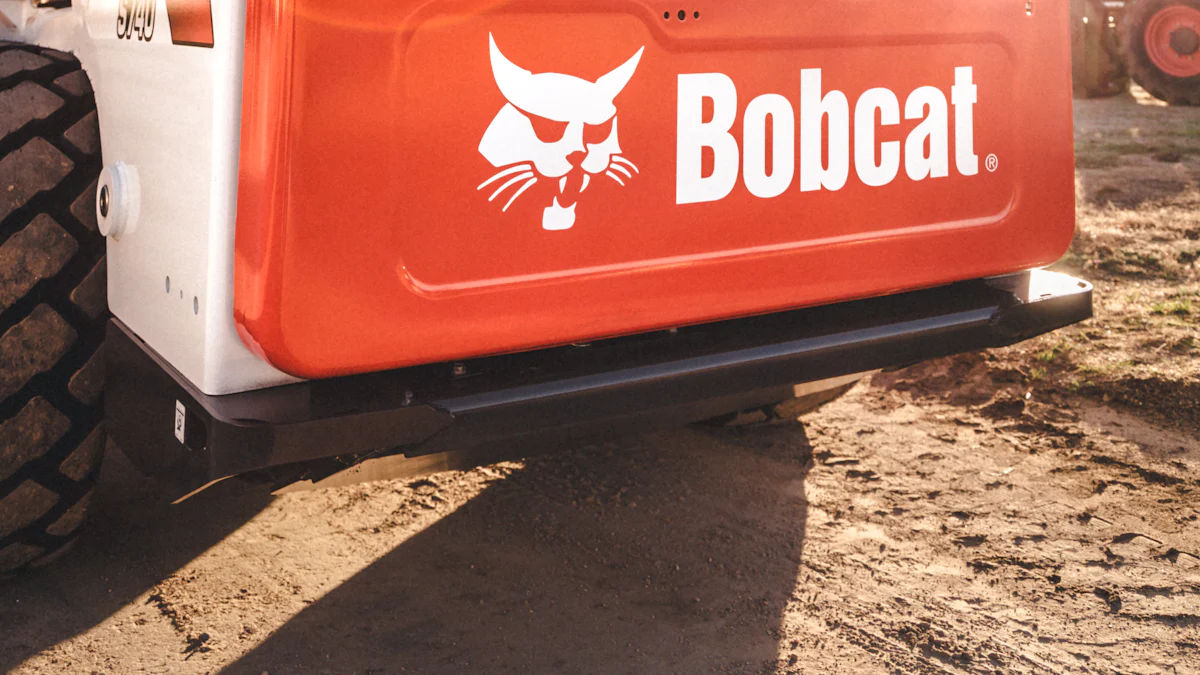
When it comes to skid movers or pallet jacks, selecting the right one is paramount for any project’s success. These versatile machines play a crucial role in both construction and landscaping tasks, offering efficiency and flexibility. Understanding the differences between various types of skid movers, such as vertical and radial lifts, is essential for making informed decisions that align with specific project requirements.
Types of Skid Movers

Vertical Lift Skid Movers
Vertical lift skid movers are known for their exceptional capabilities in reaching significant heights, making them a valuable asset for projects that involve stacking materials or loading at elevated positions. These machines boast robust features that cater to specific needs and requirements, ensuring optimal performance and efficiency.
Features of Vertical Lift Skid Movers
- Enhanced Lifting Capacity: Vertical lift skid movers are designed to handle heavier loads with ease, providing the necessary strength for lifting and transporting materials efficiently.
- Extended Reach: With their vertical lift mechanism, these skid movers can reach greater heights compared to radial lift counterparts, allowing for versatile applications in various construction and landscaping tasks.
- Stability and Precision: The vertical lift design offers superior stability during lifting operations, ensuring precise positioning of materials without compromising safety.
Advantages of Vertical Lift Skid Movers
- Height Versatility: The ability to reach high elevations makes vertical lift skid movers ideal for tasks that require working at different height levels, such as building construction or rooftop installations.
- Increased Productivity: By efficiently stacking materials or loading trucks at significant heights, vertical lift skid movers contribute to enhanced productivity on job sites.
- Optimized Performance: The powerful nature of vertical lift skid movers enables them to tackle challenging tasks with ease, delivering reliable performance under demanding conditions.
Disadvantages of Vertical Lift Skid Movers
- Limited Maneuverability: Due to their focus on vertical reach, these skid movers may have limitations in maneuvering within confined spaces or navigating through tight corners on job sites.
- Higher Cost: The advanced features and capabilities of vertical lift skid movers often come at a higher price point compared to radial lift models, impacting overall equipment investment costs.
Radial Lift Skid Movers
Radial lift skid movers offer unique advantages tailored towards specific applications that prioritize machine agility and pushing force. With their circular lift path and efficient design, these machines excel in tasks that involve ground-level operations and rough terrain environments.
Features of Radial Lift Skid Movers
- Agility and Flexibility: Radial lift skid movers are renowned for their agility in maneuvering through rough terrain and tight spaces, providing flexibility for tasks such as digging, grading, and material handling.
- Excellent Visibility: The design of radial lifts ensures clear visibility to the bucket area, enhancing operator awareness during ground-level tasks and improving overall operational efficiency.
- Low Maintenance Requirements: With fewer internal parts compared to vertical lifts, radial lift skid movers require minimal maintenance efforts while maintaining consistent performance levels.
Advantages of Radial Lift Skid Movers
- Ground-Level Efficiency: Radial lift skid movers are highly effective in tasks that involve pushing, digging, or grading at lower heights where the load remains close to the ground level.
- Cost-Efficiency: For projects focused on ground-level operations and material handling within limited height ranges, radial lift skid movers offer a cost-effective solution without compromising performance.
Disadvantages of Radial Lift Skid Movers
- Height Limitations: While excelling in ground-level tasks, radial lift skidders may not be suitable for projects requiring extensive lifting at significant heights due to their arc limitations compared to vertical lifts.
- Reduced Power at Heights: Tasks involving substantial lifting operations at elevated positions may pose challenges for radial lifts as they optimize force exertion primarily at lower to mid-range heights.
Choosing the Right Skid Mover

Assessing Your Needs
Project Requirements
When considering the selection of a skid mover for your project, it is crucial to evaluate the specific project requirements that will dictate the machine’s optimal features and capabilities. Understanding the nature of the tasks involved, such as material handling, lifting heights, and terrain conditions, is essential in determining the most suitable skid mover for efficient operations.
- Identify the material handling needs of your project, including the type of materials to be transported and their weight capacity requirements.
- Consider the lifting heights involved in your tasks to ensure that the skid mover can reach the necessary elevations for loading, stacking, or unloading materials.
- Evaluate the terrain conditions where the skid mover will operate to determine whether features like stability control and maneuverability are critical for seamless performance.
Budget Considerations
In addition to assessing your project requirements, budget considerations play a significant role in choosing the right skid mover that aligns with your financial constraints while meeting operational needs. Understanding the initial investment costs and long-term maintenance expenses is vital in making an informed decision that balances performance with affordability.
- Determine your allocated budget for acquiring a skid mover, considering both upfront purchase costs and potential financing options available.
- Factor in maintenance costs associated with different types of skid movers, such as routine servicing, parts replacement, and overall durability over time.
- Explore cost-effective models that offer reliable performance without compromising quality or essential features required for your project.
Comparing Vertical and Radial Lifts
Performance Comparison
When comparing vertical lift and radial lift skid movers, it is essential to analyze their performance characteristics to identify which type best suits your project needs. Each lift style offers unique advantages based on factors like lifting capacity, height reach capabilities, and operational efficiency.
- Evaluate the lifting capacity of vertical lifts versus radial lifts to determine which machine can handle heavier loads more effectively.
- Compare the height reach capabilities of both lift styles to assess which one aligns better with your project’s requirements for elevated material handling tasks.
- Analyze the overall operational efficiency, including speed, maneuverability, and precision control offered by vertical and radial lift skid movers under varying work conditions.
Maintenance and Durability
In addition to performance considerations…
“Radial lifts typically have lower maintenance costs…great visibility.” – Comparative Data
“Vertical lifts are more costly to maintain…have limited stability on rough terrain.” – Comparative Data
When evaluating maintenance…
Recapping the key insights, understanding the distinct features of vertical and radial lift skid movers is crucial for optimal project outcomes. For final recommendations, consider the specific needs of your tasks to determine the most suitable machine. Looking ahead, future trends in skid mover technology may focus on enhancing efficiency, durability, and versatility to meet evolving industry demands effectively. Stay informed about advancements to make informed decisions aligning with your project requirements and goals.
Post time: Jun-11-2024
